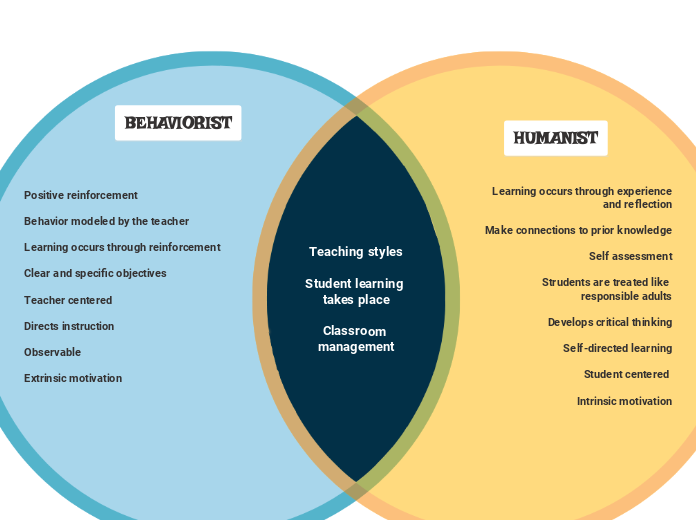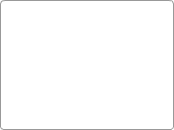Creativity & Innovation
Personalized
Scientific Inquiry
Promote Critical Thinking & Solve Problems
Critical thinking is described as the “ability to design and manage projects, solve problems, and make effective decisions using a variety of tools and resources” (pg. 12)
-Students will learn how to understand and develop solutions that will address local issues and real-world problem.
Thinking critically requires students to “acquire, process, interpret, rationalize, and critically analyze large volumes of often conflicting information to the point of making an informed decision and taking action in a timely fashion” (pg. 12)
http://www.edugains.ca/resources21CL/21stCenturyLearning/21CL_21stCenturyCompetencies.pdf
Differentiated Instruction
Differentiated instruction meets the individual needs (strengths, weaknesses, interests, etc) of all students by determining the appropriate instructional and assessment strategies.
High Order thinking skills (HOTS)
"Those who employ high-order thinking skills understand how to analyze and evaluate complex information, categorize, manipulate and connect facts, troubleshoot for solutions, understand concepts, connections and big picture thinking, problem solve, ideate and develop insightful reasoning."
https://tophat.com/glossary/h/high-order-thinking-skills/
Blooms Taxonomy
Multiple Intelligences
21st Century Learning
Collaborative Communities
Create a professional learning community outside of school
Advisory systems
Teaching Teams
Systems of Support
Subtopic
1.
Knowledge of Childhood Development
Social and Emotional Development
Supportive Environment
3. Structures for effective caring
Team teaching
Block scheduling
Looping
Small class sizes
2. Connections among staff & families
Authentic Family Engagement
Regular parent meetings & visits
Relational trust
Voluntary Associations
Staff Competence
Staff collaboration
1. Classroom Learning Communities
Team-building & relationship building exercises
Creative thinking
Leadership
Trust building
Consistent routines & Policies
Collaboration
Collaboration as a 21st Century learning skill is for students being able to “work in teams, learn from and contribute to the learning of others, [use] social networking skills, [and demonstrate] empathy in working with diverse others”. This skill also requires "students to develop collective intelligence and to co-construct meaning, becoming creators of content as well as consumers." (pg. 13)
http://www.edugains.ca/resources21CL/21stCenturyLearning/21CL_21stCenturyCompetencies.pdf
Communication
Communication as a 21st century learning skills means students are able to “communicate effectively, orally, in writing, and with a variety of digital tools” but also to “listening skills” (pg. 12)
http://www.edugains.ca/resources21CL/21stCenturyLearning/21CL_21stCenturyCompetencies.pdf
Assessing Students
Summative Assessment
Concept maps
Article analysis
Performance
Presentation
Quiz/test
Projects
Assignments
Labs
Portfolios
Formative Assessment
Concept maps/graphic organizers
Conferencing & reviews
Learning/response logs
Classroom discussions
Quiz
Journals
Peer evaluation
Self-evaluation
Teacher observations
Diagnostic Assessment
Diagnostic assessments
-valuable tool to determine the students' knowledge/understanding and skills at the beginning of the year or per unit. It can also be done at the beginning of each lesson. This will allow the teacher to determine the individual and classroom strengths and weaknesses.
Ex) KWL Charts, surveys, pre-tests, journals,
Timely Feedback
If we want students to submit work in an expected time period, we should make the effort to return back in a timely manner. I try to hand work back within 1-7 days. If I will be taking longer, then I will explain to students what I am working on and the expected timeline they should expect their work back. I feel this helps me to stay accountable and it models to students the importance of organizing your work and time.
Appropriate/constructive Feedback
Appropriate feedback does not mean, "good", "yes", "excellent", "no", "what were you thinking". It should be way to show students how to reach the conclusion (plan ideas to achieve the desire outcome).
Self-evaluation & Peer Evaluation
Relevant & Engaging Tasks
Clear & Transparent Goals/Objectives
Productive Instructional Strategies
Learning Style Inventory
Completed by students at the beginning of the year so they are aware of their learning style. It will help students with their metacognitive learning.
Teaching How to Students to Learn
7. Self-regulate
6. Independent Practice
5. Guided practice
4. Modeling & Coaching
(iii) Evaluating
(ii) Monitoring
(i) Planning
3. Formative feedback
(iv) Self-evaluation/peer-evaluation
(iii) Peer Editing
(ii) Revision
(i) Practice
2. Diagnostic Assesment
Diagnostic assessments
-valuable tool to determine the students' knowledge/understanding and skills at the beginning of the year or per unit. It can also be done at the beginning of each lesson. This will allow the teacher to determine the individual and classroom strengths and weaknesses.
Ex) KWL Charts, surveys, pre-tests, journals,
1. Metacognitive strategies
(iv) Think-Alouds
(c) Role-playing
(b) Problem-solving
Explain my thinking process out loud as I go through certain steps or try to analyze a situation/problem.
(a) Reading Comprehension
Guided Reading Stratgies
Implementing guiding reading strategies will allow students to gather meaning from certain text and help compare it to my response as a reference. This can be done with an article analyzed by groups of students that can be discussed. Students will be encouraged to use key terminology as noted in expectation C2.1 and relate it to theory of evolution noted in C2.3 of Grade 11 (Strand C: Evolution) Ex) Grant Currin's (2019) article, "Why Haven't All Primates Evolved into Humans?"
https://www.livescience.com/32503-why-havent-all-primates-evolved-into-humans.html
(iii) Lecture Wrapper
A lecture wrapper is used before and after an lesson, activity, or test. It will help students self-monitor and reflect on their learning. By the end of the lesson, students will identify the 3 main ideas from the class and they will compare it to my list.
Assignment wrapper options:
(i) students to reflect on the assignment. Students will evaluate the process they used when completing the assignment.
(ii) students to provide a summary of their feedback and how will use the advice to improve on their learning in the future
(ii) Goal Setting
Students need to brainstorm their plan when it comes to an assignment or project and explain how they will achieve their goals. It will allow me to assess their progress versus focusing only on their final product.
(i) Organizational Tools
(g) Create objectives & Goals
(f) Graphic Organizers
(e) Timelines/Schedules
(d) Consistent rules & polices
Co-create with students the:
routines, policies, and procedures that are posted in the room for students to see and refer to throughout the year if issues arise.
Ex) Being on time – what happens if the student is late or submitting assignments on time
Ex) Procedure for missing a lab or test
(c) Achievement Charts
Achievement Charts - are more specific than checklists
- explain what is expected of students by using a set criteria
- have a specific indicators of quality that students can help self-evaluate or receive peer feedback.
- They allow for a specific and comprehensive assessment of a student’s strengths, as well as areas of a skill or subject where there is room for improvement;
https://www.ldatschool.ca/checklists-achievement-charts/
(b) Rubrics
(a) Checklists
Checklists:
- help students to learn how to self-evaluate.
- Checklists are assessment tools that set out specific criteria, that will be used to record the development of the skills, strategies, and attitudes/behaviours.
- helps to organize information about a student or group of students.
- helps to identify students' learning needs
Ex) The criteria to keep notebook organized, how to dissect, laboratory preparation, etc
https://www.ldatschool.ca/checklists-achievement-charts/
Student-centered instruction
4. Cognitive Supports
(xiv) Learning groups
(xiii) Think-pair share
(xii) Scaffolding
(xi) Graphic Organizers
(x) Peer tutor
(ix) Acronyms
(viii) Rehearsals & role-playing
(vii) Songs, rhymes or rhythms
(vi) Chunk information
(v) Provide visual cues & props
(iv) Teach note taking skills
(iii) Practice Problem solving & critical thinking
(ii) Outlining
(i) Elaboration - Summarizing and paraphrasing
3. Collaborative learning
Collaborative learning will provide students with:
-a way to receive support as they work in small groups with peers within their ZPD
-seek help from teachers and peers.
-healthy discussions results and students may benefit in solving problem together
-opportunities to articulate their ideas, listen to others ideas/perspectives, resolve differences, and manage themselves
-opportunities to develop metacognitive skills like self-regulation and executive functioning
Overall, it improves student communication skills, responsibility, organization, time management, initiation and self-regulation skills.
Note - a successful collaborative learning task are open-ended, higher level tasks that must be "group-worthy tasks in which all must engage for the work to be successfully accomplished, support for students to learn to work together, and sophisticated questioning and scaffolding skills on the part of teachers." (Darling-Hammond et al, 2020)
2. Personalized lessons
The lessons are personalized to the students' cultural backgrounds, needs, strengths, and interests.
The teacher would gather this information from the student profile sheet that would be used to create a more tailored unit that is inclusive and equitable.
1. Building on & Expanding Student's Prior Knowledge & Experiences
(ii) Creating a rich environment
(i) Teaching Students within the Zone of Proximal Development (ZPD)
Conceptual Understanding & Motivation
Science Technology Society Environment (STSE)
There is an interdependence with science and technology as a way to understand the natural world, as well as to solve societal and environmental issues and problems. Science offers explanations for natural phenomena and aims to solve problems with technological advancements to deal with medical and health-related issues.
Ex) Students examine a current technological or scientific development and assess its impact on individuals, society, and the environment. This can be done issues relating to stem cell research, organ transplantation, etc.
-Teachers will activate students prior knowledge (ex) brainstorming, KWL chart, Listen-Draw-pair-share
-Students will acquire knowledge by research
-Students will apply their knowledge
Constructivism
Inquiry-based Learning
Project or Problem-based learning
Technology
Concept mind map making
Game creation tools
Quick feedback
21st Century Digital Citizenship
Cultural Awareness
Information fluency
Media Fluency
Cultural awareness
Effective use of technology
Real-time collaboration









